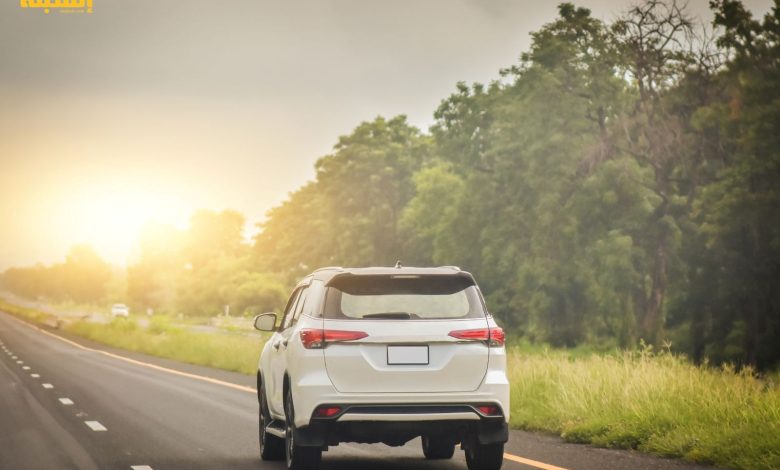The 5 Vehicle Checks Every Driver in the Gulf Must Do Before a Long Drive

There’s an exceptional feeling that comes with exploring the open road in the Gulf, whether it’s a weekend getaway from Riyadh into Dammam, or taking a scenic drive toward the seaside. The possibilities for adventures are deeply embedded within our highways. However, before you open your favorite playlist and set your GPS, it becomes imperative that you ask yourself one question that lies ahead of you, between you and your perfect escape: Is your car in as good a shape as you are?
Highway and environmental conditions can wreak havoc on any car. Being hundreds of kilometers from the nearest populated area, watching your car fail is a nightmare scenario that could tip a perfect trip into a stream of stress. Fortunately, it turns out you can have peace of mind with just a few minor inspections, in less than 20 minutes, you can have memories you’ll only wish to keep! Here are the five critical inspections that every driver should prioritize prior to travel.
1. Tires: Your Only Connection to the Road
The tires on your car are the most important component of your vehicle that helps you stay safe while driving. On long trips, your tires may be subjected to extreme heat as your car speeds down the highway and that combined with the hot asphalt in the Gulf can push tires that have not been well maintained to their limits.
- Tire Pressure: Check the pressure of your tires and inflate to the number specified on the sticker inside the driver side door, not the number on the tire. Check when the tire is cold for accurate readings.
- Tread Depth: As a rule of thumb, you can visually check tread levels by looking for the tread wear indicator bars. If the tread is even with the little raised bars, the tires are worn dangerously low and need to be replaced immediately.
- The Forgotten Spare: Make sure to check the tire pressure of the spare. If you have a flat, the last thing you want is an additional flat!
Tip: For the ultimate piece of mind, you can always reach out for a professional inspection. If you’re short on time, there are mobile services as well! You can buy tires online and get a complete, professional tire inspection, replacement, and balancing right at your doorstep with a mobile tire service from ESTBNH, ensuring your car is equipped with safe, reliable tires for the journey ahead.
2. Fluids: The Lifeblood of Your Engine
Your vehicle depends on a number of fluids to function properly and cool down. Driving for hours on end takes its toll on the engine thereby making your fluid levels critical.
- Engine oil: With the engine cooled down and parked on a level surface, you can check the oil level. Pull the dipstick out and wipe it off. Then put it back in, pull it back out, and check the oil level. This level should be between the min and max lines.
- Coolant: Never vent the radiator cap when the engine is hot. Check the translucent coolant reservoir tank. The coolant level should be between the low and full lines (this is your top defense against overheating on that long drive in the summer).
- Windshield washer fluid: The highways can get dusty or you can drive into an unexpected cloud of insects; and literally in two seconds, your vision will disappear! Don’t forget to fill the washer fluid back up so you can always have total visibility of the road.
3. The Battery: Your Spark of Life
The summer sun is a killer of batteries. Excessive heat evaporates battery fluid, causing corrosion which also causes the battery to fail more easily. A battery that’s starting on short city trips might fail after a hot day’s driving.
- Visual Inspection: Look at the battery terminals. If it looks like there has a white or a blue, crusty substance on the battery connection, this means the battery is corroded and needs to be cleaned.
- Warning Signs: Has your car been slow to start lately? Do the headlights seem dimmer than usual when you start the car? These are classic signs of a battery nearing failure. Don’t take the risk of being stranded.
4. Brakes: Your Ultimate Safety Control
Your vehicle’s brakes will be under strain on a lengthy journey, particularly if you face other cars with varying speeds and potential hills. A brake failure tends to be catastrophic, though the warning signs can be subtle.
- Listen Carefully: When you take your vehicle on a test drive around the city, turn off the radio. Simply sit and listen. As you come to a stop, do you note any high-pitched squealing, scraping, or grinding sound? If yes, most likely it’s time to get your brakes checked.
- Check Fluid: Checking your brake fluid is an easy thing to do. If it is low, there likely is either a leak or your brake pads are worn down. Reliable tires—such as Michelin tires—also play a huge role in how effectively your brakes perform on the road. If you’re looking for new tires to improve your vehicle’s overall performance, consider buying Bridgestone tyres online for excellent durability and safety.
5. Lights & Wipers: See and Be Seen
Seeing the road—and for others to see you— is the most important priority. Sudden dust storms or the bright light of a setting sun can quickly eliminate visibility.
- Walkaround Check: Have a friend or family member assist you. With your car parked, and part of the engine running, turn on your headlights (both normal and bright), turn signals, brake lights, and hazard lights and do a quick walk around the car to make sure every single bulb is working.
- Wiper Blades: Make sure you are looking for cracking and stiffness in your wiper blades. A worn blade will smear dirt and water across your windshield instead of clearing it.
Conclusion: A Journey of a Thousand Miles Begins with a Single Check
Your journey should focus on where you are going, not the stress of potentially breaking down. Taking a few moments to conduct these 5 easy checks is a way of investing in your safety, security, and enjoyment of the trip. So inspect your vehicle, fill the gas tank, and begin your adventures.








